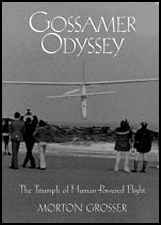1888- |
|
By Merrill Stickler Among the new displays to be seen at the Glenn H. Curtiss Museum of Local History in celebration of the 75th Anniversary of Naval Aviation, is that dedicated to the memory of Rear Admiral John Lansing Callan. The Curtiss Museum is fortunate enough to have a small collection of Admiral Callan's personal memorabilia donated by his sister, the late Mrs. Frederick B. Downing of Kinderhook, N.Y. Admiral Callan's collection of photographs were made available by his niece, Mrs. Frances Vaughan. |
|
Lanny went to North Island in San Diego Bay, Calif. with the Curtiss winter experimental camp and Flying
School, in November of 1912. During that winter, Curtiss, with the aid of his crew, developed the first experimental flying boat, as well as
training a large number of student pilots from several foreign countries, along with the many Americans who wanted wings. Callan's skill, personality and knowledge of his field, soon brought him a post as a foreign representative of the Curtiss Co. in Italy and England. In October of 1914, he went to Italy for the Curtiss Co. to set up and demonstrate three Curtiss Model F Flying Boats. These boats were built to carry two passengers and were equipped with the Curtiss OX motor. The boats were assembled at Tranto, Italy and were demonstrated for the officers of the Italian Navy, which purchased all three boats. These, and a few old Curtiss Hydroaeroplanes, sometimes called 'Robinsons', after Hugh Robinson, who had demonstrated and sold them years earlier, constituted almost the entire Italian Naval Air Force. There were no regularly established schools or factories to aleviate the problem when Italy found herself involved in the war. Signor Enea Bossi was the Italian representative of the Curtiss Co. and had arranged with the Zari Bros. of Bovisia, Italy, to build the Curtiss type boat from plans sent from Hammondsport. On September 22, 1914, Lanny made a demonstration flight in the first Italian built flying boat on Lake Como before naval officials. The boat was purchased and an order placed for several more. The Italians were convinced that naval aviation was an excellent way to patrol their long and exposed coastlines. The above extract of the complete article was taken from a copy of: The Curtiss Flyleaf of 1987, a publication of the Glenn H. Curtiss Museum of Local History I invite you to visit their site by clicking on Glenn H. Curtiss Museum of Early Aviation and Local History of Hammondsport, New York. |
|
Knoxville Journal and Tribune, Knoxville, Tennessee: October 21, 1914 Transcribed by Bob Davis - 3-13-07 Transcriber's Note:Maybe he was really refering to the ground-based aeroplanes? |
|
|
|
|
|
|
 |
Gossamer Odyssey: The Triumph of Human-Powered Flight (Paperback) Morton Grosser Product Details Paperback: 336 pages 8.8 x 5.7 x 1 inches Publisher: Zenith Press; New Edition (September 30, 2004) Used Price: from $0.91 ISBN-10: 0760320519 ISBN-13: 978-0760320518 |


|